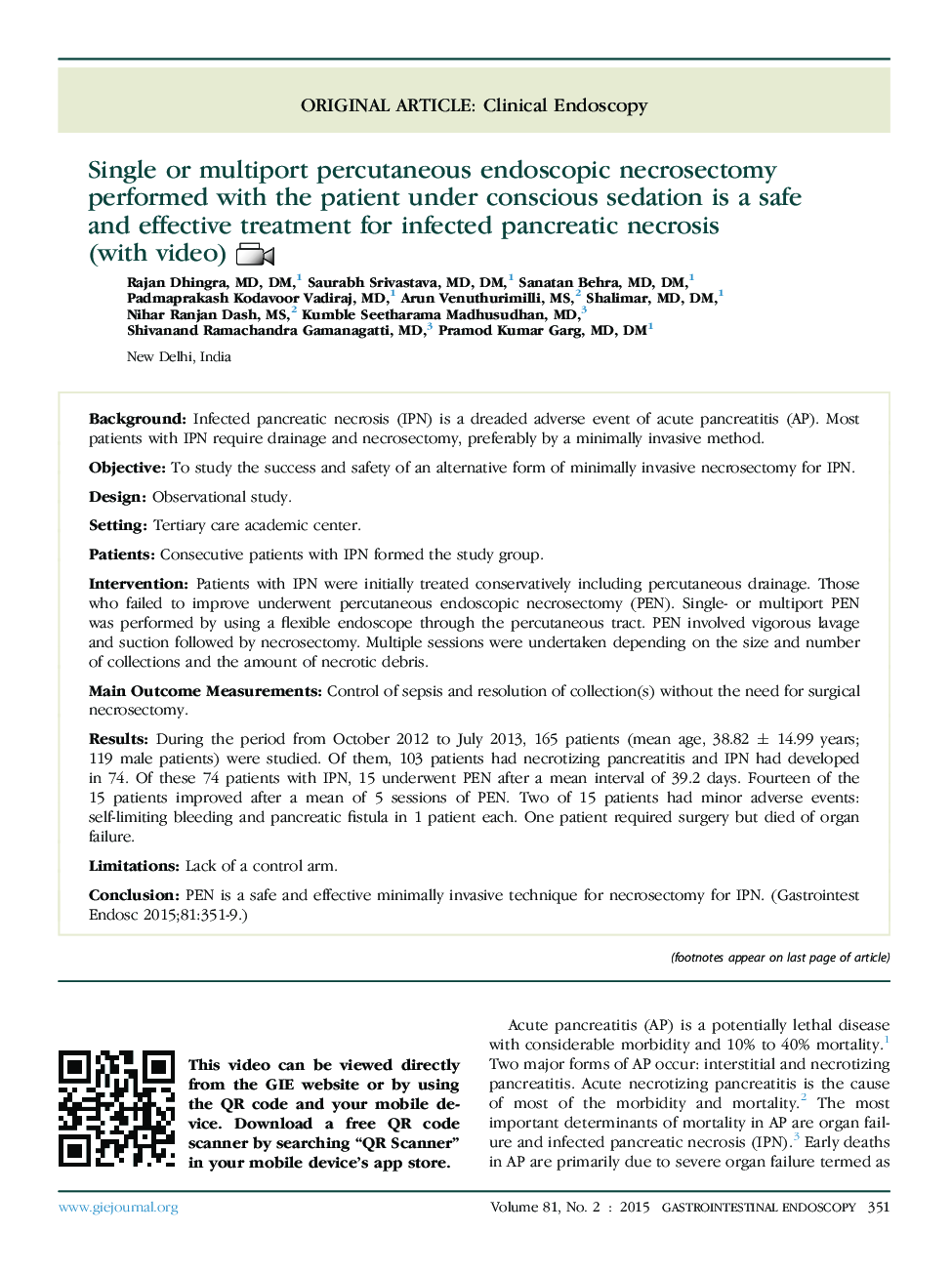| Article ID | Journal | Published Year | Pages | File Type |
|---|---|---|---|---|
| 3302515 | Gastrointestinal Endoscopy | 2015 | 9 Pages |
BackgroundInfected pancreatic necrosis (IPN) is a dreaded adverse event of acute pancreatitis (AP). Most patients with IPN require drainage and necrosectomy, preferably by a minimally invasive method.ObjectiveTo study the success and safety of an alternative form of minimally invasive necrosectomy for IPN.DesignObservational study.SettingTertiary care academic center.PatientsConsecutive patients with IPN formed the study group.InterventionPatients with IPN were initially treated conservatively including percutaneous drainage. Those who failed to improve underwent percutaneous endoscopic necrosectomy (PEN). Single- or multiport PEN was performed by using a flexible endoscope through the percutaneous tract. PEN involved vigorous lavage and suction followed by necrosectomy. Multiple sessions were undertaken depending on the size and number of collections and the amount of necrotic debris.Main Outcome MeasurementsControl of sepsis and resolution of collection(s) without the need for surgical necrosectomy.ResultsDuring the period from October 2012 to July 2013, 165 patients (mean age, 38.82 ± 14.99 years; 119 male patients) were studied. Of them, 103 patients had necrotizing pancreatitis and IPN had developed in 74. Of these 74 patients with IPN, 15 underwent PEN after a mean interval of 39.2 days. Fourteen of the 15 patients improved after a mean of 5 sessions of PEN. Two of 15 patients had minor adverse events: self-limiting bleeding and pancreatic fistula in 1 patient each. One patient required surgery but died of organ failure.LimitationsLack of a control arm.ConclusionPEN is a safe and effective minimally invasive technique for necrosectomy for IPN.
